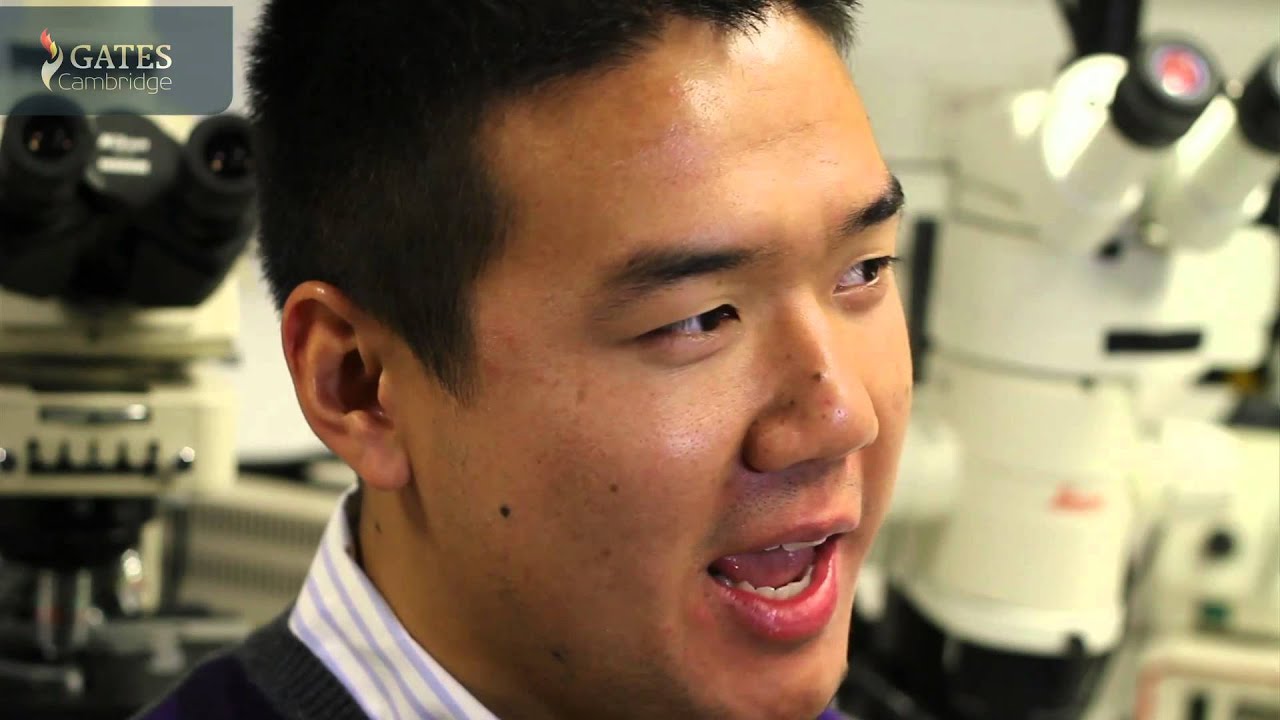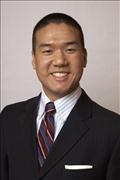
Stan Wang on his non-linear career path from stem cell research with Sir John Gurdon to start-up co-founder.
Cambridge is an extraordinarily special environment with an amazing calibre of people. Gates is a very important part of my memories and identity.
Stan Wang
Stan Wang’s career path hasn’t been a linear one. Instead he has been grabbed by different opportunities that have come his way, whether working with a Nobel Prize Laureate or co-founding a company which could provide the technology needed for the next generation of medical treatments.
When he went to university, Stan [2011] intended to do medical training. He did his undergraduate studies at the University of Akron in Ohio, starting on a combined Bachelor’s/MD programme and then moving to the medical school. It was after doing research on the differentiation of embryonic stem cells that he realised he wanted to do a PhD. “It was when I was doing my first differentiation experiment and saw heart cells beating in a dish that I first felt a love for stem cell biology and regenerative medicine,” he says.
Stan decided to look at studying in the UK for his PhD, in part due to the restrictions on funding for embryonic stem cell research imposed in the US under President Bush. He applied to the National Institutes of Health Oxford-Cambridge Scholars Programme in the first year of medical school and visited the UK. He was particularly drawn to Cambridge due to the work of Sir John Gurdon and other visionaries such as Roger Pedersen. After winning the Gates Cambridge funding, Stan applied to intermit his medical school training to complete his PhD in Surgery.
He spent the first two years of his PhD mainly at the Gurdon Institute in Cambridge and was there when Sir John won the Nobel Prize for Physiology or Medicine in 2012. Stan’s PhD focused on the pluripotency and differentiation of stem cells and scientists’ ability to change the epigenetic state of stem cells in order to reprogramme them. While he was at Cambridge Stan also gave a TEDx talk on the future of regenerative medicine, the process of replacing, engineering or regenerating human cells, tissues or organs to restore or establish normal function. He also co-founded Inno-hub Ltd, a start-up aimed at empowering entrepreneurs at the most innovative universities to transform ideas into successful ventures.
The second half of his PhD was spent at the NIH in the US with Vittorio Sartorelli. He ended up finishing his PhD in 2015 and went to the Columbia University College of Physicians & Surgeons with funding from the Medical Scientist Training Programme. Due to having done a PhD, he was able to accelerate his medical training and finish early.
From researcher to start-up co-founder
That meant Stan had nine months before his residency started and decided that he might like to work on developing novel technologies. He visited Harvard where he met Professor George Church who is renowned for his work in genetics and synthetic biology. Professor Church invited Stan to give a talk at his laboratory and offered him a position doing postdoctoral research on how to apply genome engineering tools for use in creating cell and gene therapies.
Stan enjoyed the work so much that he delayed the start of his residency programme. During that time he met Nabiha Saklayen, Marinna Madrid and Matthias Wagner, the co-founders of Cellino Biotech Inc. They had invented a new delivery technology which uses lasers to modify cells in order to make it far more efficient to create the types of cells that are needed for new, innovative cell therapies. They needed a synthetic biologist with CRISPR gene editing experience. Stan came on board and helped to test different delivery scenarios with stem cells and CRISPR. The experience made him realise that the technology could be used as more than a versatile delivery tool and that it was part of a larger story about the future of regenerative medicine.
The start-up found premises at a venture capital firm and tough tech accelerator, The Engine by MIT. A seed investment followed which meant Stan had to decide whether he wanted to work full time on the start-up. “My plan had been to take the academic, medical track and maybe become an entrepreneur in the future, but it happened earlier than I expected,” he says. “It was a good opportunity. It is not every day that a large investor puts money into an early idea.”
The company was launched in August 2017 and closed its first funding round in December 2017. By January 2018 the founders were working on the business full time. They have since been building the platform technology as a discovery engine for cell-based therapeutics. The company brings together optics physics, synthetic biology and machine learning to differentiate stem cells into any cell type of the body. It has shown already that this can be done across different types of cells and has reduced the time it takes to discover cell programmes from years to months.
Over the next year they will look to create a unified system from the different technological components in order to speed the process up even more and make it more cost effective. Their website talks about ‘engineering cell therapies at light speed’.
“We are interested in cell types which are useful for cell-based therapies. These therapies are relatively new and very few have been approved. Our bet is that building our platform will enable the creation of next-generation therapies,” says Stan. “By making the process faster and easier we can bring the costs down so the therapies can reach as many people as possible.”
Gates Cambridge
Stan remembers Gates Cambridge fondly and says it was a core part of his experience at Cambridge. He formed many friendships within the Gates community and still keeps in touch through alumni and other Gates Cambridge events. “It was a very stimulating experience,” he says.
“I had deep, cross-disciplinary conversations about everything from social inequality to 14th century English literature. That environment and the time to think that it gave me has provided me with some of the best memories I have. Some of the best ideas that I am now working on came from that time. There is something about the environment, the history, the physicality of time and place that stimulates creativity. Cambridge is an extraordinarily special environment with an amazing calibre of people. Gates is a very important part of my memories and identity.”

Stan Wang
- Alumni
- United States
- 2011 PhD Surgery
- Trinity College












